|
|
 |
 |
|
Andamby sapphire alluvials, Andamby, Ambanja District, Antsiranana Province, NW Madagascar
|
 |
|
|
|
A new site with alluvial sapphires discovered in May or June 2011 by local rice farmers. In August 2011 some 1,000 to 2,000 diggers were working in the pits. To date, sapphires have been found over an
NW-SE trending area measuring approximately 500 x 100 m.
After not even a year of extensive digging all artisanal mining ceased in May 2012. After the rainy season which stopped in April, all
pits were flooded. It remains doubtful if the local sapphire diggers will ever resume mining during the dry season (2nd site visit by Wolfgang Hampel, 27 May 2012).
|
|
|
The site is situated right on the National Highway RN6 linking Antananarivo with Diego-Suarez, just some 14 km before you reach Ambanja.
|
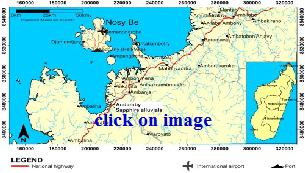
|
|
Geologically, the site is situated in gravels over coarse sandstones belonging to the Isalo Group.
The diggers follow a thin, 3 to 5 cm thick layer of sapphire bearing gravel at a depth of 3 to 6 m. The host rock of the primary mineralization is not known but presumably it is an alkaline
basalt.
Right: excerpt of the 1956 geological map showing the main geological features.
|
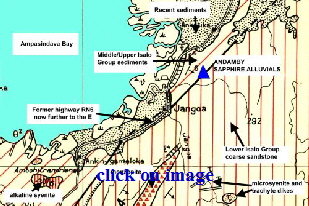
|
|
Within a few weeks after the discovery, the tiny village of Andamby turned into a little town with improvised bars, restaurants, houses and shops.
|

|
|
The sapphire diggers were excavating numerous pits to a maximum depth of 6 to 7 m. Due to high groundwater levels no deeper pites were dug. The alluvial ground is rather unstable and many pits
collapsed during the rainy season.
|
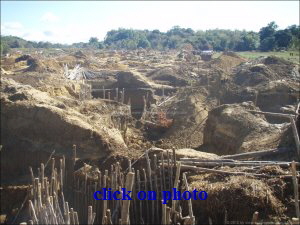
|
|
As soon as the gravel layer was reached (at the bottom of the pit) short tunnels were dug into it.
|

|
|
The gravel is sieved, the clayey parts are washed away, the coarse fraction is then searched for sapphires.
|
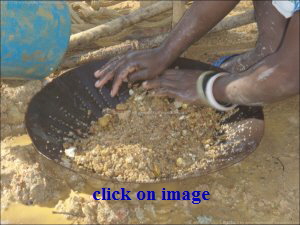
|
|
Small collection of alluvial saphhires to a maximum size of 9 mm. Some sapphires are strongly waterworn, others still show sharp crystal faces. Perhaps the sapphires are derived from differrent
sources.
|
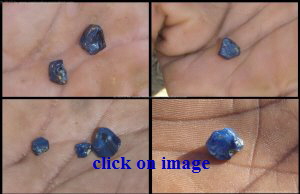
|
|
Rarely small euhedral quartz crystals can be observed in the alluvials.
|
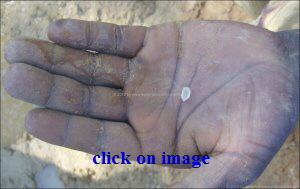
|
|
An almost black mineral in subhedral grains which I could not identify so far. It is found quite abundantly in the gravel and reaches maximum sizes of 15 mm. The local diggers call it “onyx”.
|
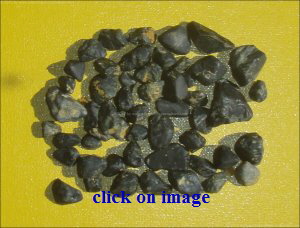
|
|
|

